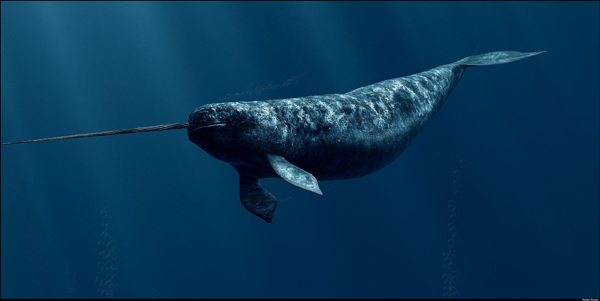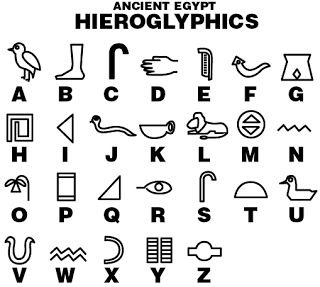About the Narwhal and It’s features
The narwhal or narwhale (Monodon monoceros) is a medium-sized toothed whale that possesses a large “tusk” from a protruding canine tooth. It lives year-round in the Arctic waters around Greenland, Canada, and Russia. It is one of two living species of whale in the family Monodontidae, along with the beluga whale. The narwhal males are distinguished by a long, straight, helical tusk, which is an elongated upper left canine. The narwhal was one of many species described by Carl Linnaeus in his publication Systema Naturae in 1758.
Like the beluga, narwhals are medium-sized whales. For both sexes, excluding the male’s tusk, the total body size can range from 3.95 to 5.5 m (13 to 18 ft); the males are slightly larger than the females. The average weight of an adult narwhal is 800 to 1,600 kg (1,760 to 3,530 lb). At around 11 to 13 years old, the males become sexually mature; females become sexually mature at about 5 to 8 years old. Narwhals do not have a dorsal fin, and their neck vertebrae are jointed like those of most other mammals, not fused as in dolphins and most whales.
Found primarily in Canadian Arctic and Greenlandic and Russian waters, the narwhal is a uniquely specialized Arctic predator. In winter, it feeds on benthic prey, mostly flatfish, under dense pack ice. During the summer, narwhals eat mostly Arctic cod and Greenland halibut, with other fish such as polar cod making up the remainder of their diet.[5] Each year, they migrate from bays into the ocean as summer comes. In the winter, the male narwhals occasionally dive up to 1,500 m (4,920 ft) in depth, with dives lasting up to 25 minutes. Narwhals, like most toothed whales, communicate with “clicks”, “whistles”, and “knocks”.
Narwhals can live up to 50 years. They are often killed by suffocation after being trapped due to the formation of sea ice. Other causes of death, specifically among young whales, are starvation and predation by orcas. As previous estimates of the world narwhal population were below 50,000, narwhals are categorized by the International Union for Conservation of Nature (IUCN) as Nearly Threatened. More recent estimates list higher populations (upwards of 170,000), thus lowering the status to Least Concern.[4] Narwhals have been harvested for hundreds of years by Inuit people in northern Canada and Greenland for meat and ivory, and a regulated subsistence hunt continues.
The Narwhals tusk
The most conspicuous characteristic of the male narwhal is a single long tusk, which is in fact a canine tooth[18][19] that projects from the left side of the upper jaw, through the lip, and forms a left-handed helix spiral. The tusk grows throughout life, reaching a length of about 1.5 to 3.1 m (4.9 to 10.2 ft). It is hollow and weighs around 10 kg (22 lb). About one in 500 males has two tusks, occurring when the right canine also grows out through the lip. Only about 15 percent of females grow a tusk[20] which typically is smaller than a male tusk, with a less noticeable spiral.[21][22][23] Collected in 1684, there is only one known case of a female growing a second tusk (image).[24]
Scientists have long speculated on the biological function of the tusk. Proposed functions include use of the tusk as a weapon, for opening breathing holes in sea ice, in feeding, as an acoustic organ, and as a secondary mating organ. The leading theory has long been that the narwhal tusk serves as a secondary mating organ of males, for nonviolent assessment of hierarchical status on the basis of relative tusk size.[25] However, detailed analysis reveals that the tusk is a highly innervated sensory organ with millions of nerve endings connecting seawater stimuli in the external ocean environment with the brain.[26][27][28][29] The rubbing of tusks together by male narwhals is thought to be a method of communicating information about characteristics of the water each has traveled through, rather than the previously assumed posturing display of aggressive male-to-male rivalry.[28] In August 2016, drone videos of narwhals surface-feeding in Tremblay Sound, Nunavut showed that the tusk was used to tap and stun small Arctic cod, making them easier to catch for feeding.[30][31] It’s important to note, however, that the tusk can not serve a critical function for narwhals’ survival because females, who generally do not have tusks, still manage to live longer than males and occur in the same areas. Therefore, the general scientific consensus is that the narwhal tusk is a sexual trait, much like the antlers of a stag, the mane of a lion, or the feathers of a peacock.[32]



